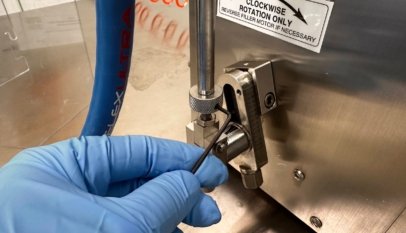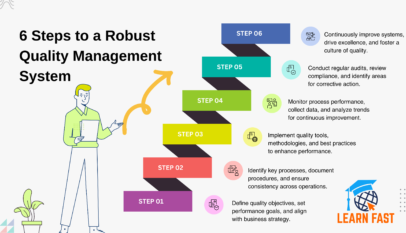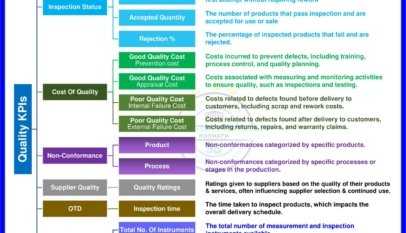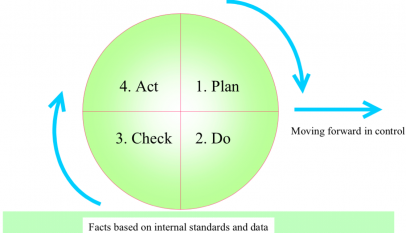Introduction
The Toyota Production System (TPS) has long been regarded as a paragon of efficiency and effectiveness in the manufacturing industry. One of the primary principles of TPS is “The Toyota Way,” a management philosophy emphasizing continuous improvement and respect for people. In this blog post, we will share a practical problem-solving framework inspired by The Toyota Way that can be applied to various industries and organizations. This comprehensive blog post will delve into the critical elements of this framework and provide insights on how you can leverage it to improve problem-solving and boost efficiency within your organization.
Understanding the Problem-Solving Framework
This framework consists of five distinct stages, which together form a systematic approach to problem-solving:
- A. Define the Problem
- B. Break Down the Problem
- C. Set Targets
- D. Analyze the Root Causes
- E. Implement Countermeasures
Each stage is vital in identifying and resolving issues and ensuring practical and sustainable solutions. Let’s look at each stage and how they contribute to the framework.
Stage-by-Stage Analysis
A. Define the Problem:
Before diving into problem-solving, clearly defining the issue at hand is essential. This involves understanding the gap between the current situation and the desired state and identifying the symptoms and effects of the problem. A well-defined problem sets the stage for more effective problem-solving and helps ensure that the correct issues are being addressed.
B. Break Down the Problem:
Once the problem has been defined, the next step is to break it down into smaller, more manageable components. This process helps clarify the issue’s scope, making it easier to understand and address. By breaking down the problem, you can more easily identify the underlying causes and focus on finding targeted solutions.
C. Set Targets:
After breaking down the problem, it’s crucial to establish measurable targets that define the desired outcome. These targets should be Specific, Measurable, Achievable, Relevant, and Time-bound (SMART). Setting clear and achievable goals ensures that your problem-solving efforts are directed toward meaningful improvements and allows you to track progress over time.
D. Analyze the Root Causes:
With targets in place, it’s time to dive deeper and identify the root causes of the problem. This stage thoroughly analyzes the underlying issues, using tools such as the “5 Whys” technique or the Fishbone Diagram. By identifying the root causes, you can develop targeted countermeasures that address the core issues rather than merely treating the symptoms.
E. Implement Countermeasures:
The final stage of the framework involves developing and implementing countermeasures to address the root causes of the problem. This may include changes to processes, systems, or behaviours. Once countermeasures are in place, monitoring their effectiveness and making adjustments is essential, ensuring that the problem is fully resolved and improvements are sustainable.
Benefits of the Toyota Way-Inspired Problem-Solving Framework
Adopting a structured problem-solving framework like the one inspired by The Toyota Way offers several benefits:
- Enhanced problem-solving capabilities: The systematic approach ensures that problems are thoroughly analyzed and addressed, leading to more effective and lasting solutions.
- Improved efficiency: By identifying and resolving the root causes of issues, organizations can optimize their processes and systems, reducing waste and improving productivity.
- Increased employee engagement: The framework emphasizes teamwork and collaboration, fostering a culture of continuous improvement and empowering employees to contribute to the organization’s success.
Implementing the Framework in Your Organization
To successfully implement this problem-solving framework within your organization, consider the following steps:
- Develop a strong understanding of the framework: Ensure that key stakeholders and team members are familiar with the five stages of the problem-solving framework and understand how they contribute to the overall process. This may involve conducting training sessions or workshops to educate employees on the principles and techniques of The Toyota Way-inspired framework.
- Establish a culture of continuous improvement: Encourage a mindset of ongoing growth and development within your organization. Promote open communication, collaboration, and a willingness to learn from mistakes. Foster an environment where employees feel empowered to share ideas and contribute to problem-solving efforts.
- Adapt the framework to your organization’s unique needs: While its fundamental principles remain the same, it’s essential to tailor the approach to your organization’s specific context and requirements. This may involve adjusting the tools and techniques used in the analysis stage or adapting the implementation process to fit your organization’s structure and culture.
- Monitor progress and measure results: Regularly assess the effectiveness of the problem-solving framework by tracking progress towards established targets and measuring the impact of implemented countermeasures. Use this information to identify further improvement areas and refine the framework.
- Celebrate successes and share learnings: Recognize and celebrate your team’s achievements as they successfully navigate the problem-solving framework and implement effective solutions. Share the lessons learned and best practices across the organization, fostering a culture of knowledge-sharing and continuous improvement.
Conclusion
The Toyota Way-inspired problem-solving framework offers a structured and systematic approach to identifying and resolving issues within your organization. By embracing this framework, you can enhance problem-solving capabilities, boost efficiency, and foster a culture of continuous improvement. By implementing the framework thoughtfully and deliberately, you can unlock your organization’s potential and achieve lasting success in today’s competitive business environment.

















Excelente!!! #filosofíatoyota #toyotaeslafilosofía
Dear Sir,
With the reference from LinkedIn for the job opportunity,
I am Sachin Prabhakar Pathak applying herewith for the post of Sr Manager/ Manager or any suitable post of an your’s esteemed Organization/Company
I am attached herewith my Resume/CV for your reference.
I have an 20+ years experience as a ‘Manager’ in an Automobile manufacturing Company of Tata Motors Ltd,Pune in Auto division & Machine tool division of Supply Chain Management in Production Planning & Control,Despatch, Materials,Audit,Marketing,Purchase, Stores-Logistics & Production department also.
And presently having with 06 years experience as a Manager in Procurement,Purchase,Production Stores-Logistics & Production Planning & Control dept of Automobile Ancillary Spare parts manufacturing company of Auto Engg Pvt Ltd at Pune.
I have knowledge & skill of SAP system in (MM-PP-SD) module and Computer Applications in
(Dos,Window,MS-Word,MS-Excel, MS-PowerPoint & MS-Access)etc
I would be obliged if I got the chance to share the career through your company.
And also to obtain a position where my knowledge & experience of Automobile manufacturing company of Tata Motors Ltd with my hard work can utilized and enhanced to get the better prospects & profit for the company.
Kindly request you to allow me & give the chance to work in your esteemed Organization/Company.
Waiting for your positive reply with kind request.
Thanks and regards,
Your’s sincerely & faithfully,
Sachin Prabhakar Pathak
+918380073615